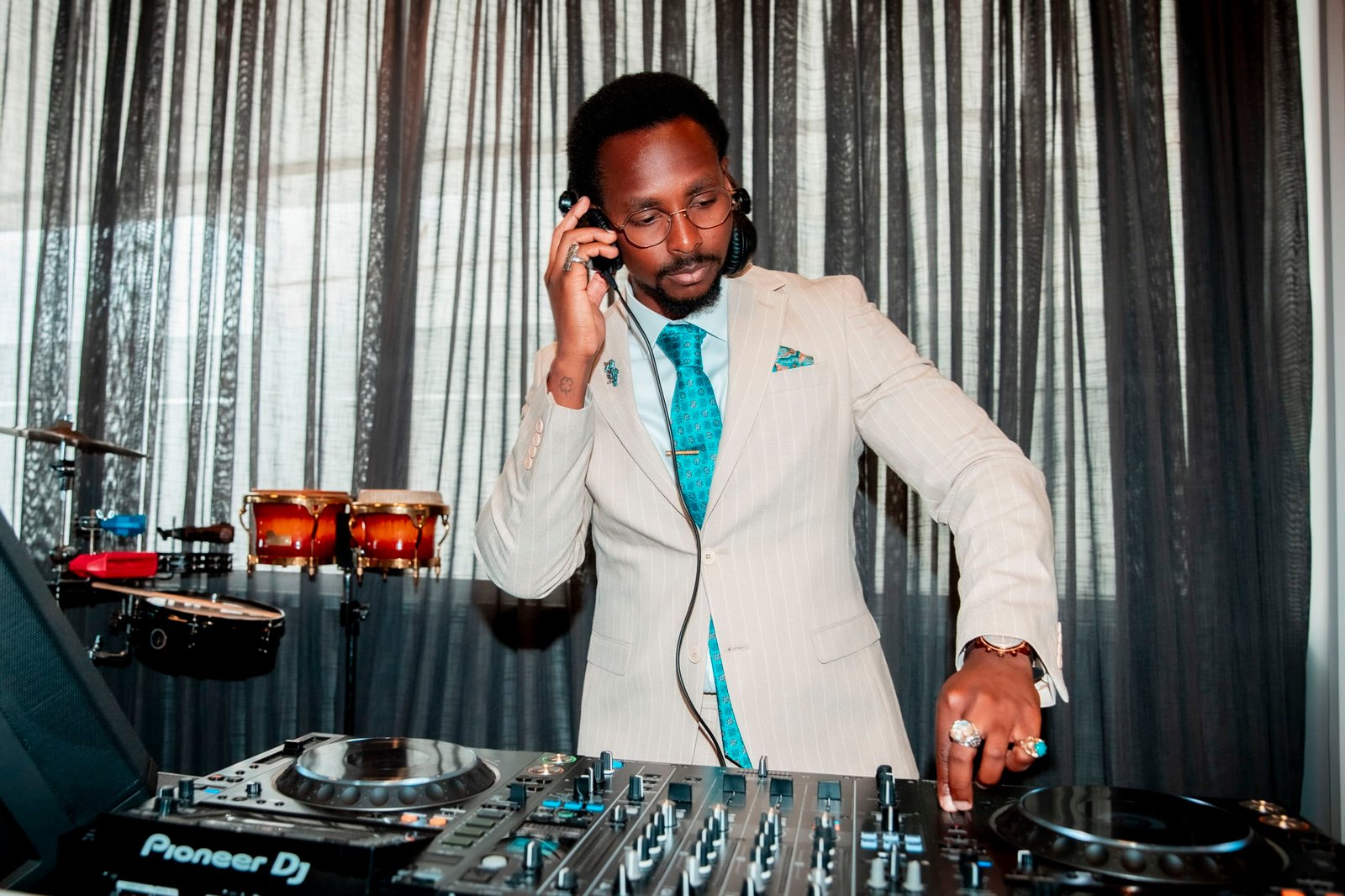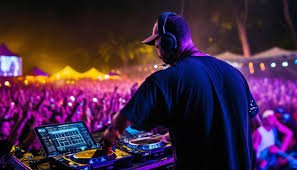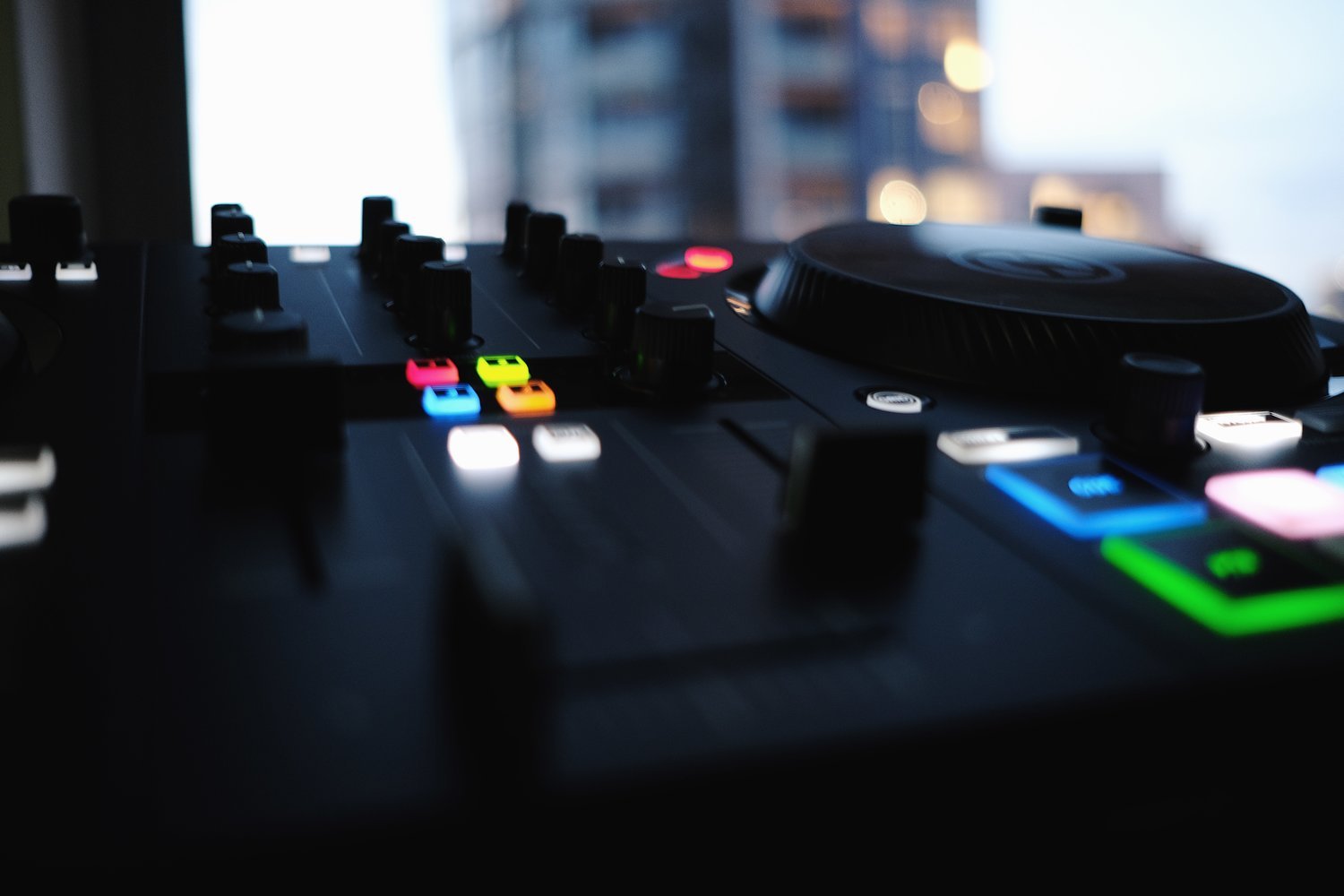A DJ’s ability to curate the perfect playlist can make or break an event. Whether it’s a wedding, corporate gathering, or nightclub performance, the music needs to match the occasion and the audience’s energy. DJs carefully choose tracks, mix genres, and control the flow of music to create memorable experiences. In this post, we’ll explore how DJs curate playlists for different events, from understanding the event’s vibe to executing seamless transitions.

Understanding the Event and Audience
The first step in curating a playlist is understanding the event and its audience. Each event has a unique atmosphere and energy that dictates the type of music to play. DJs need to consider factors such as the occasion, the crowd’s demographics, and the desired mood.
Wedding Playlists:
At a wedding, the playlist needs to be diverse, catering to different generations. The DJ will often include romantic ballads for slow dances and upbeat tracks for the reception. The couple may provide song requests, and the DJ must incorporate these while keeping the energy flowing.
Corporate Events:
For corporate events, the DJ’s role is more subtle. The music should be professional and background-oriented, setting the tone without overpowering conversations or presentations. Smooth jazz, light electronic, or instrumental tracks are often chosen to create an ambiance that enhances the atmosphere without distracting from the event’s purpose.
Nightclub and Festival Events:
In a nightclub or at a festival, DJs curate playlists to energize the crowd. These events often call for high-energy electronic dance music (EDM), house, techno, or hip-hop. The goal is to keep people dancing and engaged throughout the night, using dynamic mixes and beats to build and release energy.
Selecting the Right Tracks for the Mood
Once the DJ understands the event, the next step is track selection. DJs often have a large library of music at their disposal, but they need to choose tracks that complement the mood of the event. For example, the music played during the cocktail hour at a wedding will differ significantly from the songs played during the reception.
Genre Selection:
The genre of music is one of the primary ways a DJ sets the mood. For example, at a casual beach party, the DJ might opt for tropical house or reggae, whereas a formal event might require more classical or lounge music.
Tempo and Energy:
DJs also consider the tempo (beats per minute, or BPM) and energy of the tracks. For relaxed events, slower tempos and mellow tunes work best, while high-energy events require faster tempos and more aggressive beats. DJs must seamlessly transition between these tracks, maintaining a consistent flow.
Reading the Crowd and Adapting the Playlist
A key skill for any DJ is reading the crowd and adjusting the playlist accordingly. As the event progresses, the DJ monitors how the audience responds to the music. If the crowd seems disinterested or the energy is dipping, the DJ may switch up the tempo or genre to re-engage listeners.
For example, if the dance floor is empty at a wedding reception, a DJ might shift from slower songs to more upbeat, popular tracks that encourage people to dance. Similarly, at a nightclub, a DJ might start with some deep house tracks and gradually build up to more mainstream EDM hits to keep the crowd energized.
Taking Requests:
Many DJs also take requests, especially at events like weddings or parties. While it’s important to incorporate guest requests, DJs need to ensure these tracks fit into the overall vibe of the event. They may blend the request into their set, creating smooth transitions that maintain the atmosphere.
Crafting Seamless Transitions
A crucial aspect of curating a playlist is ensuring that transitions between songs are smooth and natural. DJs often use beatmatching, EQ adjustments, and crossfading to create seamless transitions. These techniques help maintain the energy and flow, preventing awkward pauses or shifts in tempo.
For example, if transitioning from a slower ballad to a high-energy dance track at a wedding, the DJ might use a filter effect or a slow fade to bridge the gap. This ensures that the change in tempo isn’t jarring for the guests.
Preparation and Flexibility: A DJ’s Secret to Success
While DJs carefully plan their playlists ahead of time, flexibility is key. They should always be prepared to improvise based on how the event unfolds. DJs bring a selection of songs that are tailored to the event but are also ready to adapt when the crowd’s mood shifts. Preparing a range of music—from the expected to the unexpected—gives DJs the flexibility to keep the party going.
At events like weddings or corporate gatherings, DJs may receive last-minute song requests, and they must be able to quickly find and incorporate these tracks without disrupting the flow. In these cases, the ability to make quick decisions and react to the crowd is crucial.
Conclusion
Curating a playlist for an event is a delicate balance of preparation, understanding the crowd, and adapting on the fly. DJs must carefully choose tracks that fit the mood and vibe of the event, transitioning seamlessly between songs to maintain energy and engagement. Whether it’s a wedding, corporate event, or nightclub performance, a DJ’s ability to curate the perfect playlist can transform an event into an unforgettable experience. With the right blend of genres, tempo, and crowd-reading skills, any DJ can elevate the atmosphere and create lasting memories.











